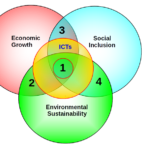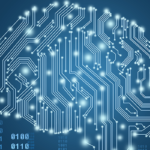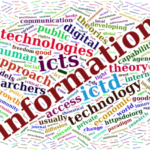2013 is not 2000.
This short and seemingly tautological phrase was repeated several times during the first day of the just-finalized 2013 Global MDG meeting in Bogotá. It was also reused to magnify how much has changed since the Millennium Declaration was issued.
While many of such changes might have negative implications for developing countries, I want to highlight the positive differences and the opportunities they offer to all of us from the perspective of information and communication technologies (ICTs).
First, we must acknowledge the fantastic and unexpected growth in using mobile technologies and devices globally. While at the beginning of the new Millennium, mobiles were practically nonexistent in developing countries, today, almost 4.8 billion people in such nations use them. Experts have already pointed out that this is the first time in history that technology has spread so fast to many people in many countries. But let us not forget that over 90% of these users have access to a basic mobile device, as smartphones are still expensive and demand higher access charges.
Second, we have seen the rapid emergence of social media and so-called Web 2.0 platforms. Unlike the Internet of the 1990s, social media empowers users to generate their own content and, in one click, distribute it in real-time to billions of people at almost no cost. Nowadays, some of the most popular social networks claim to have close to 1 billion users—while over 500 million are using Twitter, for example.
Mobiles and social media are linked in multiple ways. Just recall the recent “Arab Spring” revolutions, which capitalized on them both, mobilized millions and triggered political change. The impact of the new ICTs on the public sphere can thus be enormous.
ICTs are not foreign to the MDGs—quite the opposite. They are indeed an integral part of the Millennium Agenda, as reflected in MDG 8, Target 18, which calls for ensuring access to ICTs for all. Looking back at the impressive mobile penetration numbers, we see that Target 18 will be achieved well before 2015.
As it may, there are two issues here. First, MDG Target 18 is basically focused on access alone. While this is indeed a commendable goal, access to ICTs does not guarantee that all other MDGs will also be achieved—actually, it might compete with them in some cases. Second, it ignores that ICTs are enablers of human development and are thus a means to an end—and not a goal in themselves.
In this light, the actual development value of the new ICT stems from its transformational potential. ICTs can provide new and innovative solutions to traditional development goals. They can increase the efficiency and efficacy of public processes and radically change how development assistance is furnished by fostering a more active and dynamic involvement of stakeholders in the decision-making process and giving voice to the voiceless. Social innovation and crowdsourcing are becoming the new standards for any development agenda.
Today, social innovators and entrepreneurs tackle human development priorities by developing solutions that respond to local communities’ needs. They trust local populations and can thus effectively deliver on issues such as health, education, agriculture, and gender-based violence, among many others. Bottom-up innovation is taking root in many developing countries, and some African countries have emerged as natural leaders.
The MDGs and the upcoming post-2015 development agenda must jump into the innovation train before leaving the station. We are off to a great start as the post-2015 agenda attempts to crowdsource the process. But it should not stop there. Today, the real issue is how fast we can harness ICTs and innovations to scale up ongoing initiatives and develop new ones. Only in this fashion will we be able to sustainably reach the billions who still have little to no access to essential public services and information -while empowering them to be part and parcel of the overall process.
Cheers, Raúl





